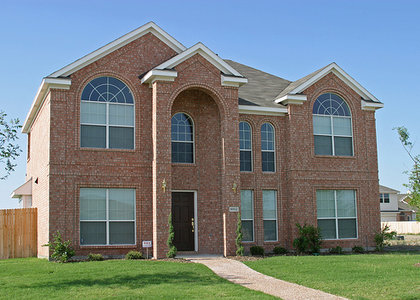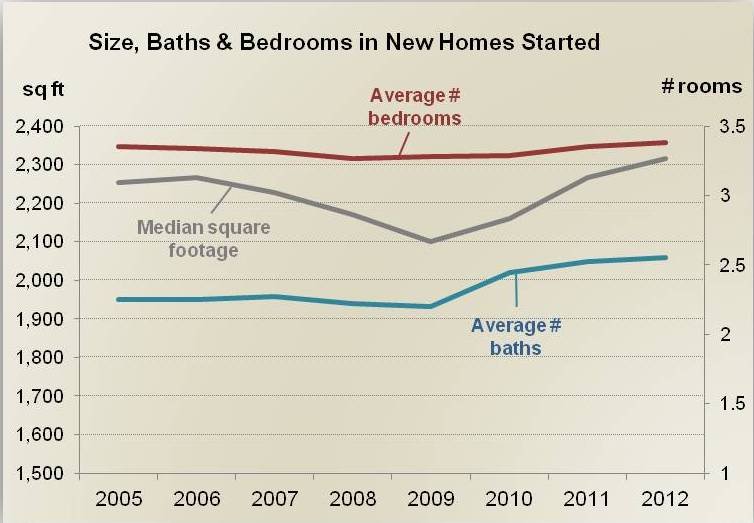Many analysts were proclaiming the demise of the McMansion, but the super-sized housing option seems to have returned from the dead.
The narrative went a little something like this: McMansions, or over-sized suburban homes, were an outgrowth of the housing boom; the speculation and exuberance that drove the great housing bubble was also responsible for the steady uptick in average home size, and with the boom over, McMansions would go the way of the dinosaur.
And in the immediate years following the 2008 crash, that narrative seemed to hold true, with median square footage of new construction single-family homes in the U.S. falling gradually. But now, with housing in recovery, it’s a new day for builders and consumers, and McMansions appear to be back and ready for action.
The Return of the McMansion
There are a number of data sources pointing towards the return of the McMansion:
- Average home size now, remarkably, exceeds the lofty sizes of the housing boom years.
- According to the most recent data from the Census Bureau, the average size of a newly built home in the U.S. was 2,642 square feet in the second quarter, far above the previous record of 2,561 square feet in 2009’s first quarter.
- From 2013’s first quarter to second quarter, the average home size leapt 5.2 percent, the largest quarter-by-quarter gain since the Commerce Department began tracking the quarterly numbers in 1987.
- Similarly, the most recent Survey of Construction found that the average number of bathrooms in new single-family homes was 2.56 in 2012, another new high (it had fallen to as low as 2.20 in 2009).
Here’s an excellent chart from the National Association of Home Builders that demonstrates the trends in single-family homebuilding:
What’s Behind It?
What could be behind this resurgence? How could new home size, after falling so steadily, reverse its course so dramatically? The answer, it appears, is a matter of affluence.
Affluent and move-up homebuyers have been fairly active in the housing market the last couple years, but because of the economic downturn and rising lending standards from banks, first-time homebuyers have made up a smaller and smaller share of the homebuying pie; indeed, according to the latest stats from NAR, first-time homebuyers accounted for only 29 percent of home sales, far below their historic average of 40 percent.
Thus, the homebuyers who are most interested in new homes are the ones who can afford McMansion-style properties, explained Stephen Melman, director of economic services for the National Association of Home Builders, to the Wall Street Journal.
“The first-time buyer now has to come up with 20 percent down payment and a pristine credit score, and that’s harder to do,” Melman said. “If the [remaining] buyers are trade-up buyers, you’re going to end up with larger, more expensive homes.”


It was interesting to realize that more bathrooms on average was the reason for increased size. A. t least it is not more “Great Rooms” or Media Centers.
If fewer large homes are being bought by first time buyers can we assume that there now may be both.t “Master” and “Mistress” (I used the term advisedly) bedroom suites? Is universal design coming into play with tub and walk in showers plus grab bars and an adjacent laundry?
Unfortunately the façade shown as representative is so ugly it is a sad prospect to imagine. Newly built luxury homes in the Hamp1ons have better scale and detailing. those mini mansions look much more harmonious in the landscape.